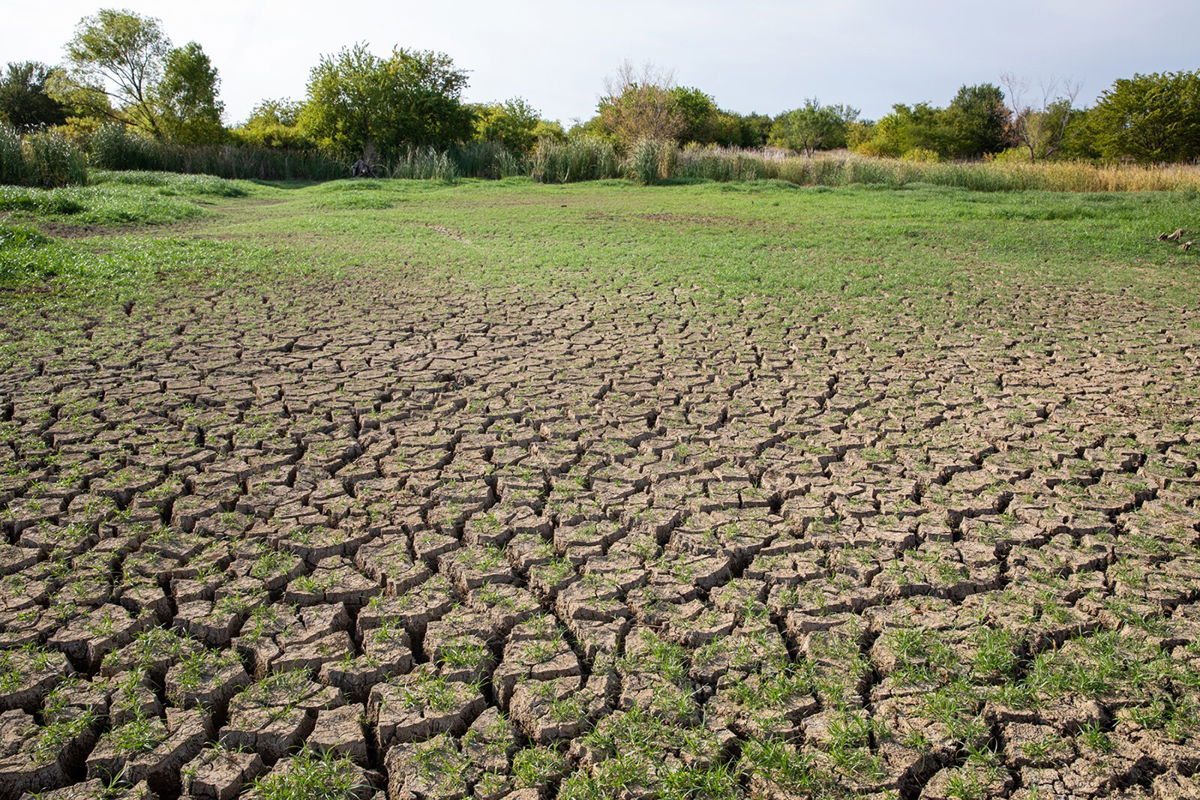Flash drought intensifies, causing agriculture concerns in the Plains and water shortages in the Northeast

A cracked lake bottom is seen in Colony
By Judson Jones, Monica Garrett and Payton Major, CNN
Flash drought conditions intensified in the Northeast and across the southern Plains, causing agriculture concerns across the regions, according to the latest US Drought Monitor released Thursday morning.
“Temperatures across the region were generally 2-8 degrees warmer than normal, with the warmest readings occurring in Oklahoma, Texas, northern Arkansas, and the western half of Tennessee,” the US Drought Monitor wrote Thursday.
Extreme drought — the second highest level on the drought monitor — in Oklahoma quadrupled in coverage, now at over 27% this week.
“Crop failure and related problems are widespread in the part of the region experiencing flash drought, especially in northeast Texas, eastern and central Oklahoma, and northern Arkansas,” the US Drought Monitor said.
McLennan County, Texas, where the city of Waco is located, went from 17.5% of the county in exceptional drought, the highest level, to over 62% this week. Waco, Texas is on track to having one of its driest years on record.
Generally hot — temperatures 4-8 degrees Fahrenheit above average — and drier weather lead to growing precipitation deficits, reductions in streamflow, poor soil moisture and water shortages in some areas.
“Severe drought expanded in coverage in eastern Massachusetts, Rhode Island, and eastern Connecticut,” the Drought Monitor said. “Widespread calls for water conservation occurred from New England to the Hudson Valley and New Jersey, and hay fields struggled in Rhode Island.”
Hot and dry weather also covered south-central and southwest Missouri, where flash drought intensified and agricultural problems continued.
In Missouri, extreme drought has increased to 18% of the state, up 16% from last week.
“Just to the north of this region, heavier rains fell in two areas, one from southeast of Kansas City to southeast Missouri, and a second in central, eastern, and northeast Missouri. The latter caused flash flooding in the St. Louis area and a record one-day rainfall at St. Louis Lambert Airport,” the US Drought Monitor wrote in their report.
This rainfall has created a sharp contrast across the state between absolutely no drought in the north and extreme drought across the southern portion of the state.
Out West, rainfall has helped improve some areas suffering from long-term drought conditions.
“Rainfall from the North American Monsoon over the last few weeks led to some improvements in the drought situation across Arizona and New Mexico, where precipitation deficits lessened,” the US Drought Monitor said.
The-CNN-Wire
™ & © 2022 Cable News Network, Inc., a WarnerMedia Company. All rights reserved.